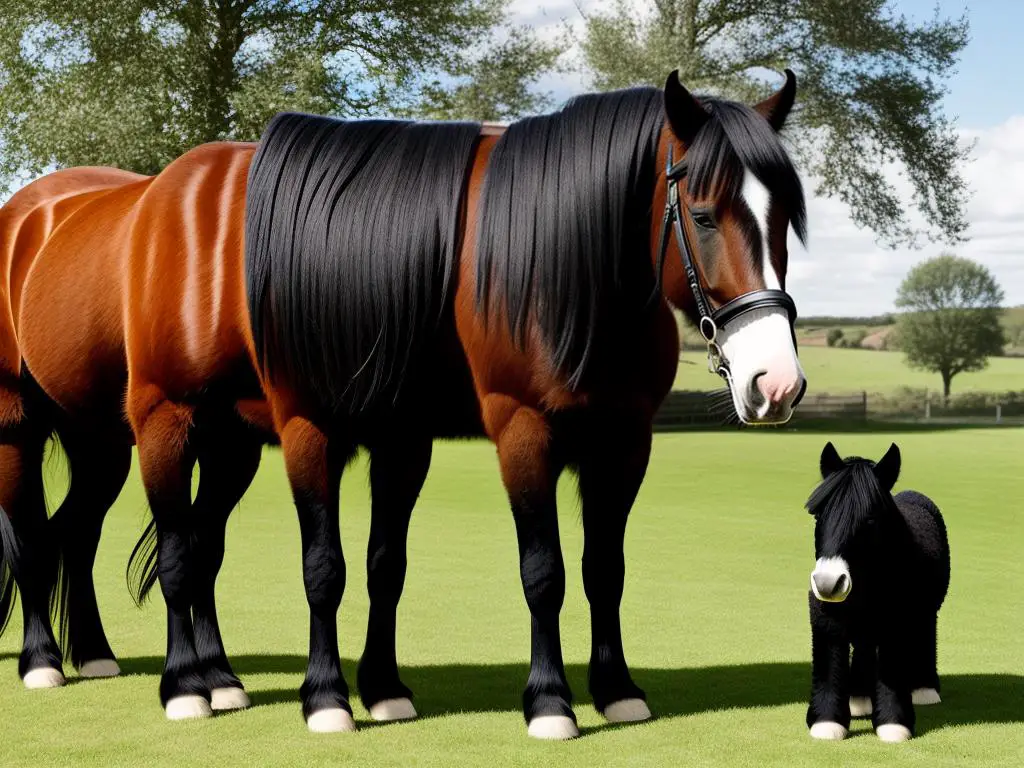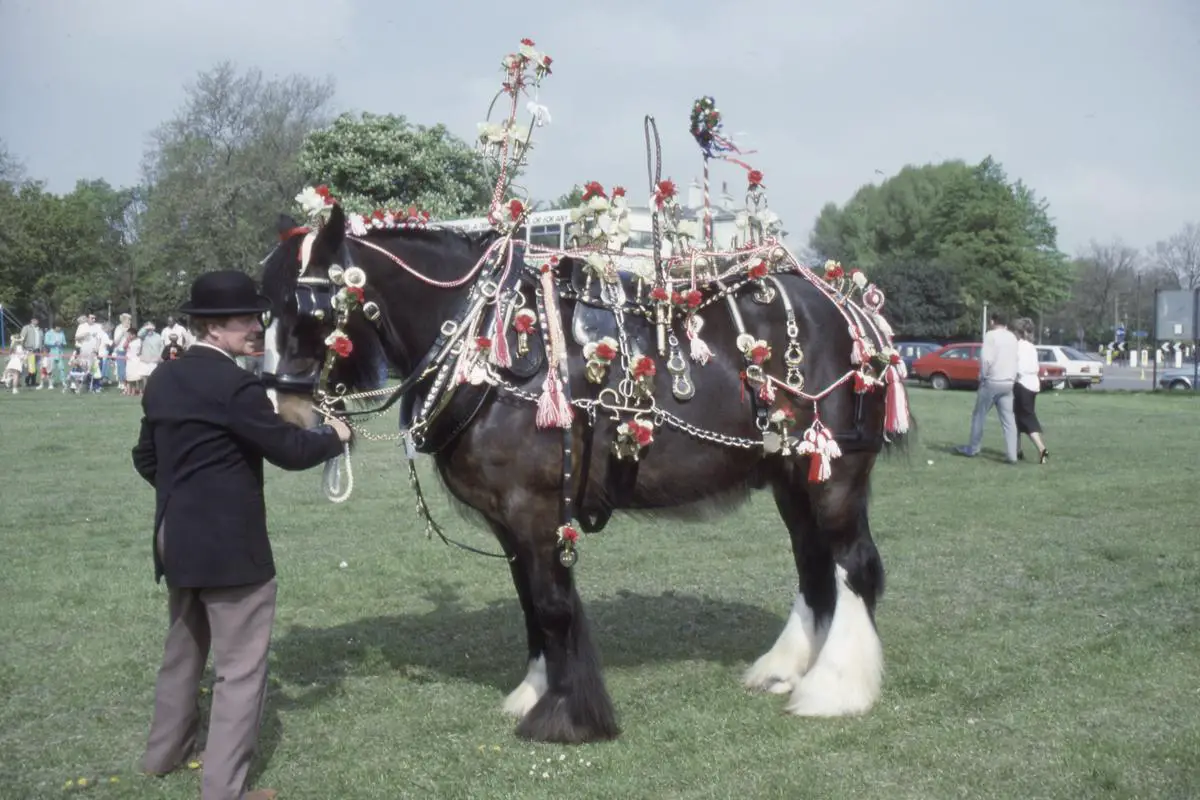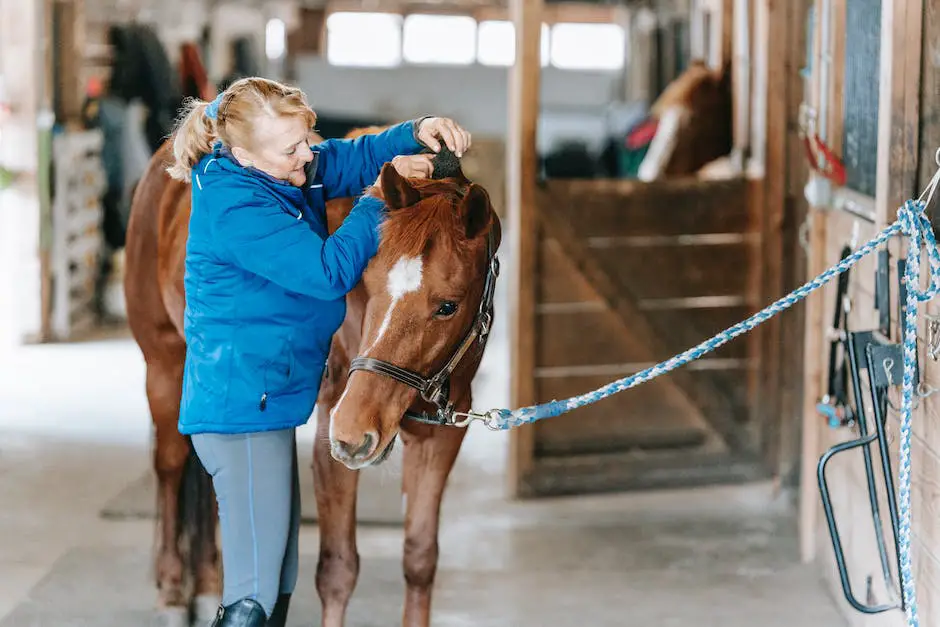Enter the fascinating world of equine varieties, where we’ll journey into a deep comparison between two celebrated horse breeds: the Shire horse and the regular, or average, horse. Unravel the mysteries of their origins and history, delve into the nuances of their physical characteristics, and understand what makes their temperament and behavior unique. Discover the various roles they play in human societies and explore the specialization of each breed, shedding light on their versatility. Lastly, learn about the essential aspects of their care, from daily needs to distinct health concerns. A deeper comprehension of these topics provides integral insight into what sets the mighty Shire horse apart from the regular horse.
Table of Contents (Horspedia)
Origins and History
Origins and History of Shire Horse and Regular Horse
Diving into the world of equine history, the Shire horse and the regular horse, typically referring to popular breeds like the Arabian or Quarter horse, have distinctive backgrounds.
The Shire horse, recognized for its massive size and gentle temperament, has roots traced back to England’s medieval era. Originating from the ‘Great Horse’, these animals were bred for war, carrying knights clad in heavy armor. When the need for war horses declined, their role transitioned into farming and pulling large wagons, particularly from the 17th century onwards. The transition to agriculture allowed the breed to thrive, as their strength and durability were ideal for heavy draft and farm work.
Conversely, we can trace the origins of the ‘regular horse’, predominantly referring to breeds such as Arabians or Quarter horses, across diverse regions and centuries. The Arabian horse, hailed as one of the oldest horse breeds, originates from the Arabian Peninsula. Their roles included warfare, transportation, and trade, which cultivated their notable characteristics such as endurance, speed, and close relationship with humans.
The American Quarter Horse, named for its speed over a quarter-mile stretch, is a breed born in the United States. Rooted early in the country’s history, these horses descend from a mix of breeds – Arabians, Turk, and Barb, crossed with native English horses brought by the colonists. These horses were used for riding, racing, and war and quickly became an indispensable part of life on the American frontier.
Comparison in Attributes: The Shire Horse and the Regular Horse
The Shire horse, a breed that claims historical roots as a working and warhorse, boasts a prominent stature and robust build from generations of careful breeding for both strength and stamina. Renowned not just for their size, the Shire horses are also valued for their calm and gentle demeanor, making them an unassuming gentle giant.
Unlike the Shire horse, the Arabian horse is more associated with qualities such as speed, agility, and close human relationships. They owe their stamina from their lengthy history of living in demanding desert environments, while their fidelity came from generations of residence alongside Bedouin tribes.
The American Quarter Horse, another regular breed, is recognized for its blazing speed over short distances and adaptable nature. This breed’s compact and muscular physique together with its adaptable nature contributes significantly to their popularity and versatility, making them common choices on farms, ranches, and racetracks across the country.
In conclusion, the Shire horse, Arabian horse, and the American Quarter Horse, each shaped by their unique origins and histories, exhibit distinctive characteristics and standards that set them apart from other horse breeds.

Physical Characteristics
Size and Appearance: The Towering Shire Horse Versus the Regular Horse
Known as one of the largest and strongest draft horse breeds globally, the Shire horse exudes a certain majesty with its grand stature, unique physique, and powerful yet graceful presence. When compared to a regular horse, the stark contrast between their characteristics is impossible to miss.
Size and Weight
Shire horses are considerably larger than most other horse breeds. An adult male Shire horse stands at an impressive 17 to 19 hands high, roughly 5.7 to 6.3 feet at the horse’s shoulder. Adult females are only slightly smaller, measuring about 16 to 18 hands high. In comparison, the average height of a regular horse typically ranges between 15 to 16 hands high.
The weight of a Shire horse is another staggering attribute, usually ranging from 1,800 to 2,400 pounds. This is significantly more than many horse breeds, with regular horses typically weighing between 900 to 2,200 pounds depending on the breed.
Coat Color
Shire horses often exhibit solid and dark coat colors; bay, brown, black, and grey are the most common shades. Some Shire horses can also be seen donning a roan coat (a mixture of white and colored hairs). Regular horses, on the other hand, exhibit a vast array of colors and patterns that vary significantly across different breeds.
Life Expectancy
Both Shire horses and regular horses have comparable life expectancies. A well-cared-for Shire horse tends to live between 25 to 30 years, which is similar to the standard horse’s life span. However, smaller horses often live longer than their larger counterparts, which can slightly differentiate their life spans.
Facial and Body Structure
One of the signature characteristics of a Shire horse is its heavy and muscular build, designed for strength and stamina. They present broad chests and well-muscled hindquarters, which is a stark contrast to the lighter and speed-oriented body structure of most regular horses.
Shire horses also bear two notable facial features, a Roman nose (a curved nose) and large, expressive eyes. These features are a less common sight in regular horses, which typically sport more streamlined facial features.
Another distinguishing feature of the Shire horse is the heavily feathered fur on its lower legs, which gives the impression of the horse wearing bell-bottom trousers. This characteristic is unusual in most other horse breeds.
A Comparative Overview
Comparing Shire horses and regular horses highlights the incredible diversity within the equine family. Each breed is unique, displaying distinct physical traits that serve specific roles, from heavy-duty farm labor to lightning-fast sprints across wide open plains.

Temperament and Behavior
Introduction to the Shire Horse: Britain’s Gentle Giant
Highly adored across the United Kingdom, the Shire horse is known for its tranquil and easy-going nature that belies its great size. Often affectionately referred to as “as big in heart as in size,” this horse has a rich history as a draft equine, an attribute that necessitated not only physical power and stamina but also a pleasant demeanor. This was essential as the Shires worked closely with humans in a variety of heavy-duty tasks, from plowing farmland to hauling substantial loads.
Notwithstanding their intimidating stature – normally ranging from 16 to 18 hands tall – Shires are frequently characterized as non-threatening. Their patience and good humor seem unaffected by surrounding noise and chaos. Their admirable qualities of resilience, dependability, and easy demeanor make them prized assets, particularly for tasks that demand steadiness and power.
The “Regular” Horse: Temperament and Behavior
When referring to a “regular” horse, it’s important to clarify that horse behaviors and temperaments can vary widely depending on breed. However, there are some general traits that many horse breeds tend to share.
Horses are, by nature, social herd animals. This means they tend to be cooperative and interact well with both other horses and humans. They are also generally quite intelligent and responsive, often exhibiting a spirited personality.
Energy levels and temperament can vary significantly by breed and individual. Some breeds, such as the Arabian or Thoroughbred, are known for their hot-blooded, spirited nature, while others, like Clydesdales and Quarter Horses, are recognized for their relatively calm and cool character.
However, regardless of breed, individual temperament can also be influenced by factors such as age, environment, handling, and training. Regular horses can show a range of dispositions from calm and placid to energetic and flighty.
A Comparative Study: Shire Horse Versus Regular Horse Temperament
A notable difference in temperament is prevalent when juxtaposing a Shire horse with a regular horse, chiefly manifested in the Shire’s naturally calm and docile demeanor. Their roots as a draft horse breed have bestowed Shires with a relatively muted energy level when compared to numerous other equine breeds, making them appear much more tranquil and disciplined.
This, however, doesn’t imply that typical horses are unsociable or excessively lively. Most horse breeds have been around humans for thousands of years, resulting in their generally compliant and adaptable nature. Nevertheless, these breeds may exhibit a wider range of temperaments and behaviors than the consistent mild-manneredness of Shire horses.
In summary, both Shire horses and regular horses possess a spectrum of personal traits, and yet Shires usually distinguish themselves with a gentle, patient, and affable demeanor, solidifying their status as a popular choice for those needing dependable and composed working horses.

Photo by anniespratt on Unsplash
Uses and Purposes
The Shire Horse: A Towering Prodigy of the Equine World
The Shire horse, a native of England, stands as one of the most sizeable horse breeds. Ranging typically 17 to 19 hands (68 to 76 inches) in height, the Shire is categorized as a draft horse, traditionally employed for strenuous tasks like hauling and farm work because of their remarkable strength. Their placid and stable character further makes them ideal for jobs that demand patience and toughness.
In bygone days, Shire horses were the mainstay of plowing fields, wagon pulling, and carrying hefty burdens. In contemporary times, they feature prominently in draft horse exhibitions and competitive events. Shires are also retained in certain work scenarios, such as forestry and brewing industries, where their strength and dexterity are highly valued. Due to their massive size and serene nature, Shire horses have found their place in several therapeutic horseback riding programs as well.
Regular Horse: A Versatile Companion
The term “regular horse” usually refers to an average-sized horse breed, which spans multiple breeds encompassing various purposes and uses. The versatility of a regular horse lies in its adaptability to a plethora of tasks and disciplines, from work to sport and leisure activities.
Horses such as the Quarter Horse, a typical domestic horse breed, are popular for ranch work, rodeos, and horse shows, due to their agility, speed, and keen cow sense. They are also noted to excel in equestrian sports like dressage, eventing, show jumping, and endurance riding.
Aside from their sportive capabilities, regular-sized horses have a key role in therapeutic and leisure activities. They are often used in equine-assisted therapy programs for people with physical, cognitive, and emotional challenges due to their manageable size and relatively calm temperament.
Compared to the heavy-duty Shire horses, regular-sized horses are more accessible for general riding, making them a popular choice for both first-time horse owners and experienced equestrians.
Contrast in Functions
Shire horses and regular horses, both hold unique roles in human societies due to their temperament and physical attributes. However, each breed’s distinct capabilities see them employed in different settings.
Known for their towering frame and significant strength, Shire horses are naturally suited for heavy-duty tasks. Their larger size makes them incredibly useful for jobs regular horses might struggle with. Regular horses, on the other hand, are compact and agile, which makes them ideal participants in sports, riding events, show jumping, and for interventions requiring speed and agility like therapy.
The calm and cooperative demeanors of these breeds have endeared them to therapy programs, contributing significantly to mental health and physical rehabilitation.
In essence, both Shire and regular horses have vastly different yet equally valuable roles in society. They serve as working animals, companions, sporting participants, and therapy animals. Choosing between a Shire and a regular horse largely depends on the role they are expected to play.

Care and Health Issues
Caring for Shire Horses and Potential Health Concerns
Shire horses, despite being revered for their imposing size and strength, require a certain level of specific care and attention. They have an enormous appetite in line with their size, needing a considerable amount of daily intake. The staples of a Shire horse diet should include hay or grass, grains, and a constant supply of fresh, clean water. Typically, a Shire horse will take in around 20-25 lbs. of hay and two to five lbs. of grain per day.
Given their thick, dense coats and significant body size, Shire horses require more intensive grooming than their smaller counterparts. To prevent conditions such as mud fever, regular grooming of their fur and feathers is essential. Their feet and legs, often enveloped in heavy feathering, may breed a moist atmosphere conducive to such issues if not properly managed.
Shire horses also need regular exercise. They are prone to obesity due to their larger frame, and this could lead to health problems like laminitis. Exercise not only keeps their weight in check but also maintains their muscle tone.
Some common health problems in Shire horses include chronic progressive lymphedema (CPL) associated with heavy feathering, heart conditions due to substantial body weight, and osteoarthritis, a common issue resulting from bearing heavier body weights.
Regular Horse Care and Health Issues
Most regular horses, in contrast, require a balanced diet that includes hay or grass and a measure of grains and legumes. The average horse needs 2% of their body weight in food per day, which is considerably lesser than what a shire horse requires.
Regular grooming is essential for traditional horses as well but is much simpler than for a shire. This includes brushing to remove dirt, sweat, and dead skin cells and cleaning their hooves to prevent bacterial or fungal infections.
Exercise is another critical element in a regular horse’s care, aiding in maintaining their weight and overall health. Most horses should have at least an hour of exercise daily, depending on their health and age.
Regular horses, like all breeds, are susceptible to various health problems. Among the most common are colic, laminitis, and arthritis. While every breed of horse is at risk for colic and other digestive complications, regular horses might be at slightly less risk than shire horses due to their leaner stature. Arthritis is also common, particularly in older horses or horses that have been worked heavily.
Overall, both shire horses and regular horses have unique care and health concerns. Yet, both require diligent management, a proper diet and sufficient exercise, and continuous observation for any signs of health issues.

After drawing the comparison on many fronts including the origin, physical characteristics, temperaments, uses and purposes, as well as care and health concerns, we find an incredible mix of similarities and contrasts between the Shire horse and the regular horse. These differences don’t necessarily make one better than the other, rather they emphasize the rich diversity within the equine world. Whether it’s the towering Shire horse with its magnificent presence and exceptional strength, or the versatile regular horse with its all-round abilities, each breed has a unique charm and role to play. May this comprehensive comparison serve as a guide to deeper understanding and appreciation for these two magnificent breeds.